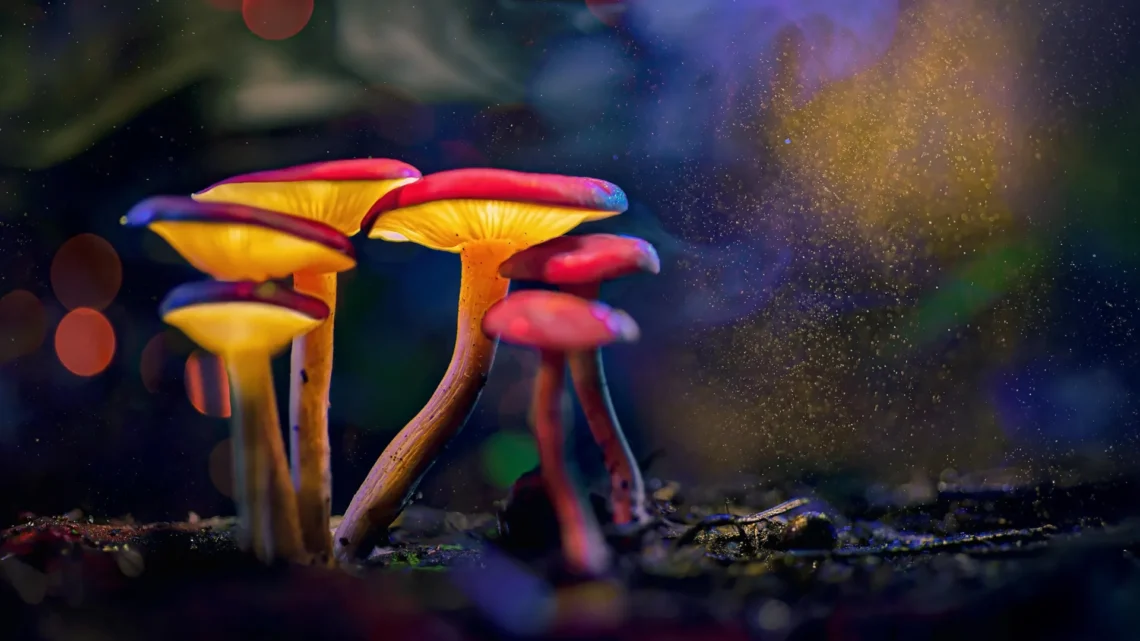“This research delves into the biosynthesis of a molecule with a long-standing relationship with humanity,” states Prof. Dirk Hoffmeister, head of the Pharmaceutical Microbiology research group at Friedrich Schiller University Jena and the Leibniz Institute for Natural Product Research and Infection Biology (Leibniz-HKI). “We are specifically addressing psilocybin, a compound found in so-called ‘magic mushrooms.’ The human body converts psilocybin into psilocin, a substance capable of significantly altering consciousness. Notably, psilocybin not only induces psychedelic experiences but is also being recognized as a promising therapeutic agent for treatment-resistant depression,” remarks Hoffmeister.
Two Paths, One Molecule
The recent study, conducted under the auspices of the Cluster of Excellence ‘Balance of the Microverse,’ reveals for the first time that fungi have independently developed the ability to biosynthesize psilocybin at least twice. While species within the Psilocybe genus utilize a known enzymatic toolkit for this biosynthesis, fiber cap mushrooms employ a distinct biochemical arsenal, ultimately leading to the production of the same molecule. This observation exemplifies convergent evolution—where different species independently acquire similar traits, despite following divergent pathways.
Investigating Fungal Genomes
Tim Schäfer, the lead author of the study and a doctoral researcher in Hoffmeister’s laboratory, elaborates: “It was akin to observing two separate workshops, both culminating in the same product. In the fiber cap mushrooms, we identified a unique collection of enzymes that bear no resemblance to those found in Psilocybe species. Nevertheless, these enzymes effectively facilitate the necessary steps to synthesize psilocybin.”
The research team conducted laboratory analyses on these enzymes. Protein models developed by chemist Bernhard Rupp from Innsbruck confirmed that the reaction sequences differ significantly from those associated with Psilocybe. “Nature has, in fact, independently derived the same active compound twice,” states Schäfer.
Understanding the Purpose Behind Production
Despite these findings, the reason for the independent production of the same compound by such distinct fungal groups remains uncertain. “The reality is that we currently lack an explanation,” emphasizes Hoffmeister. “Nature functions with purpose; thus, there must be a benefit for both fiber cap mushrooms in forest ecosystems and Psilocybe species thriving on manure or wood mulch in producing this molecule—although the exact advantage remains to be elucidated.”
“One possible explanation could be that psilocybin serves as a deterrent for predators. Even minor injuries to Psilocybe mushrooms induce a blue coloration through a chemical reaction, revealing psilocybin’s breakdown products. It is plausible that this molecule acts as a chemical defense mechanism,” suggests Hoffmeister.
Implications for Biotechnology
Though the rationale behind the dual production of psilocybin by different fungi is still undetermined, the discovery has significant practical implications. “With the knowledge of these additional enzymes, we now possess more tools for the biotechnological synthesis of psilocybin,” explains Hoffmeister.
Looking forward, Schäfer adds, “We anticipate that our findings will aid in the future production of psilocybin within bioreactors, minimizing reliance on intricate chemical syntheses.” At the Leibniz-HKI in Jena, Hoffmeister’s team collaborates closely with the Bio Pilot Plant, which is focused on developing scalable processes for natural product production, including psilocybin.
Moreover, this study contributes valuable insights into the diverse chemical strategies employed by fungi, as well as their interactions within various ecosystems. It addresses fundamental questions articulated by the Collaborative Research Center ChemBioSys and the Cluster of Excellence ‘Balance of the Microverse’ at Friedrich Schiller University Jena, with support from the German Research Foundation (DFG). While CRC ChemBioSys investigates how natural compounds influence biological communities, the Cluster of Excellence centers on the intricate dynamics of microorganisms and their environments.
Key Health Takeaway
The study of psilocybin illustrates not only its potential as a therapeutic agent for mental health conditions but also highlights the complex evolutionary pathways fungi have taken to synthesize it. Understanding these mechanisms may facilitate advancements in biotechnological applications for pharmaceutical production.




